When we live in a modern world, why do we teach English nursery rhymes? To develop a literate child and because they are the children’s first history lessons. By teaching them rhymes to sing by heart, we ensure that we are bringing up a child strong in literacy with a headstart in historical knowledge. Find out how this happens.
Nursery rhymes are full of rich words
From nursery rhymes, children inherit an earlier version of the English language. It’s a language rich with influences from ancient Rome, the Anglo-Saxons, the Vikings, the Norman invasion and Elizabethan times. Would you like to hazard a guess as to how many people over the ages have sung the nursery rhyme, London Bridge? There are so many verses suggesting how to fix it, even to the point of using silver and gold. And why did London Bridge fall down? Apparently it fell many times under different circumstances including ice and fire damage! If you’re interested here’s a quick introduction to this fascinating topic.
London Bridge is broken down, broken down, broken down,
London Bridge is broken down, my fair lady.
Here’s a short sample:
Nursery rhymes appear in everyday language
Nursery rhymes and songs nurture a sense of the past and yet breathe with the life of the present day. They are well-used references. Words and phrases appear in book-titles, songs, jokes, parodies, comedy sketches and political jibes.
Quotes from nursery rhymes keep showing up in the same way as do quotes from Shakespeare and other revered authors. However, in the case of nursery rhymes, the authors are anonymous. Newspaper headlines and advertisements feature them because phrases learned in the early years of life grab out attention. That’s because they “hit a nerve” in our cultural subconsciousness. If people didn’t learn their nursery rhymes, they’d miss out on meanings shared by people “in the know”. Does reading the phrase Diddle Diddle Dumpling make you smile? it’s because we’ve all fallen asleep in our clothes at some stage of our lives. Here’s a short sample:
A literate child who has learned many nursery rhymes can tune into reference points and jokes in other forms of literature and multi-media, not just in childhood but for the whole of lifespan. Nursery rhyme quotes even creep into cinemas, theatres, art galleries and even straight-laced places such as as courtrooms and boardrooms.
Nursery rhymes contain rare words and often have illustrations to show what they mean
A child can also get a ‘feel’ for history through hearing and using rare or arcane words and descriptions of objects, tools, foodstuffs and practices from earlier times. The word “candlestick” was once used everyday. Now it evokes the pre-electric era. Who knows what forms of energy will replace electricity in the future, and yet people will still want to remember how their ancestors lived. And so they will continue singing Jack Be Nimble.
Jack be nimble, Jack be quick,
Jack jump over the candlestick.
Nursery rhymes are historical artefacts
The nursery rhymes themselves are historical artefacts that have no need to be confined to a museum. We can store them in our minds, free from the ravages of moths. Most people living in cities don’t have a well as their water supply. Nor do they keep chickens for eggs and meat, let alone roosters or sheep, but water management and farm animals are economically and culturally of the highest importance. How charming and full of pride is the rhyming and rhythmical song Hickety Pickety My Black Hen.
Nursery rhymes can be used for setting up routines
Nursery rhymes to develop a literate child also take care of matters of social graces and interactions. We can train children to go to bed with the use of simple routines such “put on your pyjamas, brush your teeth, sing the nursery rhyme The Man in the Moon Looked Out. And then jump into bed ready for a storybook.” Here’s a short sample:
Seasons, weather and the planetary movements are also important. We can draw children’s attention to clouds, rain, wind, thunder, sun, moon and stars by singing them nursery rhymes. At the same time we are giving them ways to talk about what’s happening in their environment.
How many nursery rhymes can you recite or sing? If you were lucky enough to be brought up in a family where nursery rhymes were quoted, you probably had a very large vocabulary by the age of three. If your preschool and early years teachers were enlightened enough to help you learn to read and write with them, you’re probably a highly literate person by now. So “pay it forward” and pass on the nursery rhymes to develop the literate children in your life.
The delightful images in this article are by Blanche Fisher Wright and are available through the Project Gutenberg.
You will find some rare nursery rhymes to inspire you in the Musical Child webstore, especially in our toddler music section.
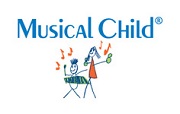
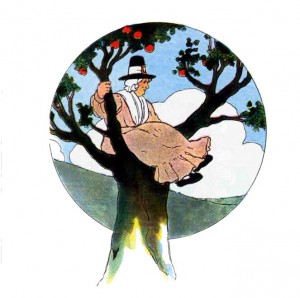
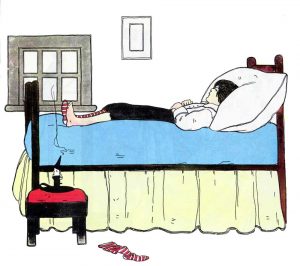
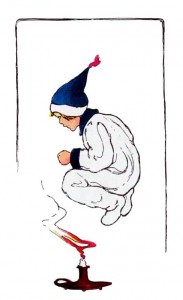
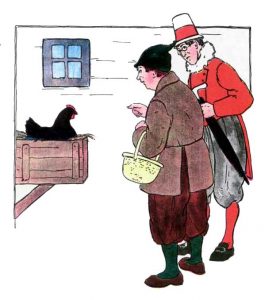
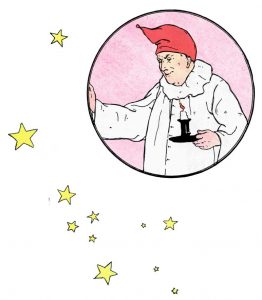
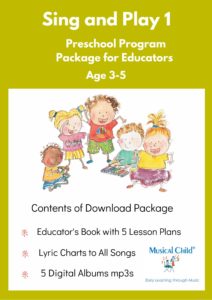

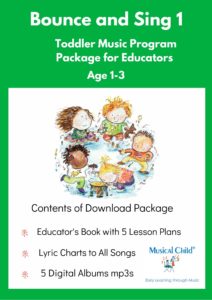
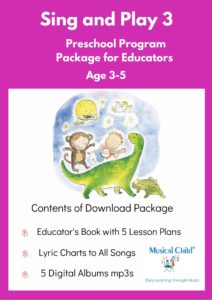
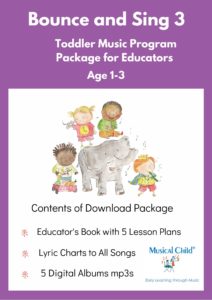
I grew up with nursery rhymes, they were always a source of joy to sing and play games with, I remember all the actions to London Bridge and continued to sing and read nursery rhymes to my own children. I know a nursery rhyme book will be one of the first items I will buy our grand children.